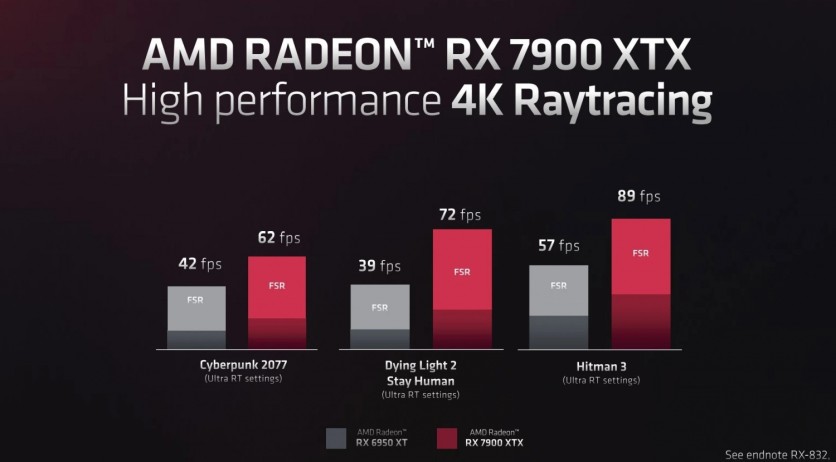Announced in mid-November, AMD's RX 7900 XTX and 7900 XT have finally gone on sale come December 13th, boasting some impeccable specs at a rather reasonable price tag.
The firm's RDNA 3 technology, which leverages a newfound chiplet technology, is home to a variety of amazing new features for the newly introduced graphics cards. These features include power efficiency, something AMD has remained immensely keen on keeping at the forefront of it business, next-generation performance metrics, and, of course, high-end visuals thanks due in part to HDMI 2.1.
The RX 7900 XTX will go on sale starting at $999, while its smaller brethren, the RX 7900 XT, will sit at a price point of $899. This is a welcome change, as, despite their myriad improvements over the previous generation, AMD has chosen instead to keep its GPUs at a somewhat reasonable price as opposed to its rival, Nvidia. The latter recently unveiled its RTX 4090 at a whopping starting price of $1,500.
Of most importance to AMD, as mentioned previously, is the price per performance, and it shows in its more expensive iteration. The RX 7900 XTX is a monster of a card, utilizing 96 Compute Units and a VRAM with 24GB of GDDR6 memory, and is promising to reach 67% faster than its previous-gen model. On the other hand, its XT counterpart will leverage 84 Compute Units, 20GB of GDDR6, and 80MB of Infinity Cache, which AMD is touting over the potential of GDDR6X.

Both cards will also be sporting DisplayPort 2.1 thanks to AMD's so-called Radiance Display engine, a feature Nvidia's RTX 4090 did not include. This will allow the 7900 XTX and 7900 XT to hit 165Hz at 8K and 480Hz at 4K resolutions, making gaming all the more pristine. AMD's rDNA 3 platform will also be host to AV1 encoding procedures, making content creation a bit more streamlined for those inclined.
Related Article: AMD RX 6000 Refresh GPU Pricing Leaks - Worth Buying?
AMD released its own metrics on 4K gaming raytracing capabilities, highlighting Cyberpunk 2077 at 62 fps, Hitman 3 at 89 fps, and Dying Light 2 at 72 fps, all on the XTX card. It's not much, but the object here is proof in the pudding, the pudding being 4K gaming metrics now ever on the rise and raytracing proving once again to be a major selling point.
Infinity Cache is yet another interesting concept that AMD brought to the table in its RDNA 2 and expanding upon in the new generation. This cache level, or "massive bandwidth amplifier," allows AMD cards to drastically improve performance and efficiency in both 1440p and 4K gaming workloads, making these new RDNA 3 cards all the more constructed for the content creator and gamer alike.
Reviews have been somewhat stellar as various reports roll in on the viability of AMD's new platform. Engadget gave the 7900 XTX a score of 80, and the 7900 XT got a 78, both of which were hit by driver issues and ray tracing capabilities still behind Nvidia's. Below is a roundup of scores posted across the internet, so potential consumers can take their pick on either card, or go Team Green instead:
RX 7900 XTX:
- Engadget 80
- TechPowerUp Editor's Choice
- PCMag 4.5 out of 5
- Tom's Hardware 4 out of 5
- TechSpot 80
- PCWorld 4 out of 5
- IGN 7 out of 10
- The Verge 7 out of 10
RX 7900 XT:
- Engadget 78
- TechPowerUp Editor's Choice
- PCMag 4.0 out of 5
- Tom's Hardware 4 out of 5
- TechSpot 70
- PCWorld 4 out of 5
- IGN 6 out of 10
- The Verge 7 out of 10
Judging by most of the feedback, it seems that the RX 7900 XT isn't as grand as one may imagine, and the XTX is a more reasonable option for those who may not want to shell out an exorbitant amount on the 4090 and 4080.
ⓒ 2025 TECHTIMES.com All rights reserved. Do not reproduce without permission.




